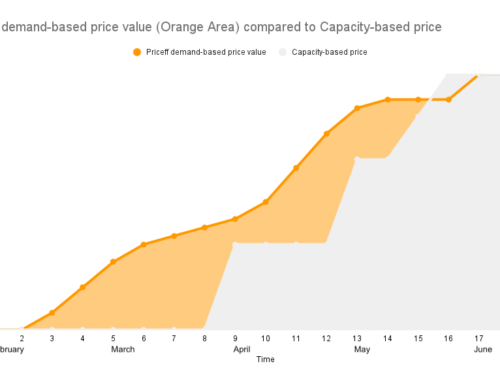What is causing this paradigm shift in pricing?
The pandemic, the war in Ukraine, and all-time high inflation numbers have produced a highly unpredictable environment. While businesses struggle with cost pressures, and even their operational continuity is threatened.
Individual consumers and companies are much more price-conscious now than they were only a couple of years ago. This has increased the overall attention toward pricing. Businesses have moved online, which changes the way products and services can be priced. Many companies are now finding solutions using AI and machine learning to optimize prices.
We see that pricing strategies are experiencing a major change due to all the uncertainties and development in technologies that help in decision-making. Accordingly, flexibility and efficiency of pricing play an important role. Dynamic pricing is the answer.
What is dynamic pricing?
Dynamic pricing is a form of pricing where the price is adjusted and adapted more or less continuously. Dynamic pricing is used to better assess the market environment and to maximize the efficiency of pricing – whether it means maximizing profits or capacity utilization.
Dynamic pricing, or broader revenue management, is often used by airlines, hotels, and transportation companies. However, we believe that the benefits of dynamic pricing can be achieved throughout all industries.
Dynamic pricing can be based on many factors. Examples of such factors are costs, competitor prices, forecasts, or demand. Let us explain the most common dynamic pricing strategies in the following paragraphs.
1 Cost+
Cost+ pricing involves adding a markup to a product’s original unit cost to determine its final selling price. The formula is simple and based on just two factors: your cost of production and your desired profit margin.
As you can see, it is not a true dynamic pricing strategy – what is dynamic (or should we say adaptable) is that you can change your prices if your costs rise or your profit margin targets change. Electronic Vehicle charging being priced based on the cost of electricity is an example of a dynamic cost+ pricing approach. However, the dynamic nature is very limited, and usually, it is hard to manage all the prices when there are many different products and services. Automation and costly systems are needed.
2 Competitor prices
Competitor-based pricing is the pricing of products and services that is based on what the competitors are charging. This pricing strategy builds heavily on accurate and extensive research, where competitor prices need to be scraped and analyzed throughout the internet and other channels. Afterward, you can dynamically change your prices when competitors change them too.
Pricing your products lower than your competitors might give you some boost, but there’s a high risk of a price war where every side will lose in the end. Also, competitor-based pricing is somewhat more reactive than proactive – your pricing often changes after competitors. With competitor-based pricing, you lock your value add to the factors you apply to competitor prices to create or manage your prices. Your company’s value add and costs are not reflected in competitor-based pricing, which might take away your profits.
3 Value-based pricing
Value-based pricing means pricing your products and services according to their value to your customers. Instead of looking inward at cost and ambitions in your company, or looking laterally at competitors’ prices, value-based pricing lets you look outward. Essentially, value-based pricing could be also called “customer-based pricing.” The dynamic part comes when you are dynamically trying to search for the perceived value of customers.
The challenge with value-based pricing is how to define the value. That requires a deep understanding of the customer business and the ability to calculate and visualize the value to your customers. Your competitors may also have a very similar value proposition to your products, and it may be difficult for the customer to understand what is best for him/her in a specific situation. Competitive pressure may push your prices far below your offering’s true value to the customer. Often value-based pricing comes down to feature-based pricing, where the prices of different features reflect their value to the customer. E.g., a black car color may be more expensive than blue or a quick service is more valuable than a slow one.
4 Market-based pricing
Market-based pricing means setting and changing prices based on the target market. This method is often used in B2B pricing and it is often used in combination with other strategies like cost+ and value-based pricing.
This approach is about differentiating prices based on various factors like geography, customer type, customer size, and competitive situation. It’s about estimating customer willingness and the competitive price pressure based on these or other factors.
The challenge with market-based pricing is that it’s not very dynamic. The above factors don’t change that often and don’t take into account extraordinary events, your speed of sales, your stock situation, or customer feedback. In B2B pricing sales reps naturally have such information and use that in addition to the market-based price or discount guidance.
5 Forecast-based pricing, Revenue management
Forecast-based dynamic pricing explains itself; the strategy is to adjust prices constantly based on a demand forecast of your service. New forecasts can be based on different factors like historical sales, sales trends, external factors, and even macroeconomic research, like the cost of raw materials. Forecasts are a vital part of revenue management solutions used by large airlines and hotel chains. For example, they can estimate how full a certain flight will be based on what has been happening in the past during the same period and given the same market conditions.
Forecasts are trying to model the real-life world and predict the future in some level of detail. However, like value-based pricing, forecasts are always approximations. There usually are multiple, and many times almost infinitely many, different factors that could affect the optimal price. Some frequently used factors are historical demand, time of the day, weekday, season, and weather. Factor models track these factors to forecast demand and set optimal prices accordingly. It is very difficult to take into account all possible topics that may impact demand.
In some industries, demand patterns are recurring, and factor models based on historical demand might work fairly well when things are stable. However, as the recent pandemic has painfully proven again, the only constant in life changes. Therefore, the main challenge of factor models is that by their very nature, they struggle with incorporating unexpected events and new information. Typically human work is needed to adjust the forecasts based on specific events (e.g. local ones) and other information. Prices based on forecasts are usually reviewed by revenue managers before they are published.
6 Demand-based dynamic pricing
Demand-based dynamic pricing aims to estimate the demand for a given product or service by continuously watching the current sales volume and determining from the data whether the demand is higher or lower than expected. This expected demand can be modeled in various ways, for example, by using machine learning and historical sales patterns. By continuously comparing the current sales volume to the expected volume, the solution can adjust the price up and down to find the optimal price for each period. This helps to smooth out the demand.
Demand-based dynamic pricing is highly adaptive by nature. The solution responds quickly and correctly to unexpected or unpredictable situations, as well as irregular fluctuations in demand. In addition, the solution is fully automated and makes pricing adjustments almost immediately from the start, since it needs very modest data to make efficient decisions. This also decreases the need for internal data science projects and historical data modeling. In most cases, the model not only optimizes revenue from sales but also smoothens demand over time. Less busy customers often are happy to get the service cheaper in more silent times and busy customers have better availability during busy times, but pay a bit more for it. In addition to optimal prices, this levels out demand within a week or between locations greatly improving the company’s resource utilization. End customers are often also happy, as they get the service cheaper or have better availability.
Priceff dynamic pricing solution works predominantly with the demand-based method. See how Priceff can help you set up dynamic pricing by reading our customer cases and solution page. Our company name Priceff comes from Price efficiency and that’s what demand-based pricing is all about. Efficiently managed continuously adapted prices, giving great results in terms of efficiency in operations and increased revenue & margin.

Demand-based pricing graph over time





